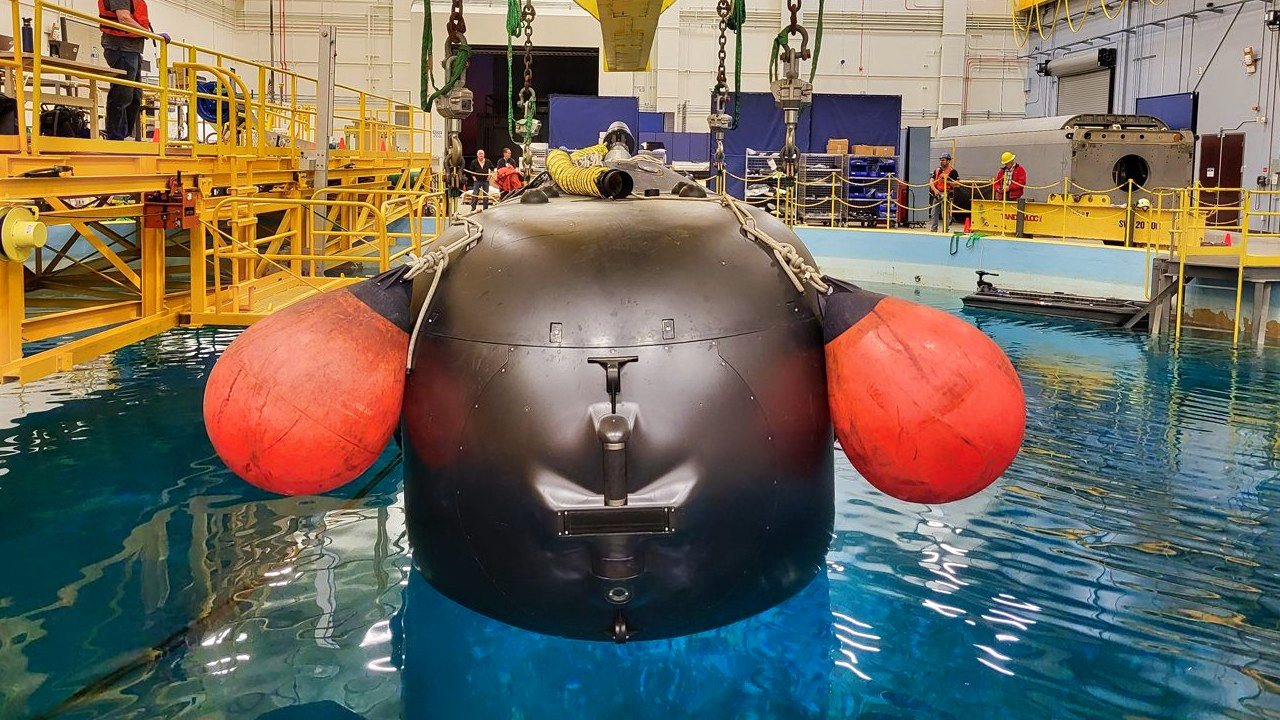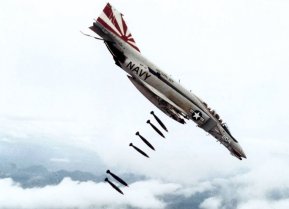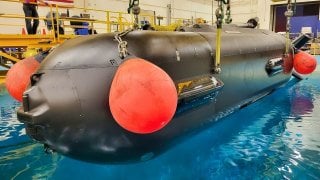Boeing Delivered Its Special Orca Drone Submarine to the U.S. Navy
As part of the partnership between Boeing and the U.S. Navy, the Orca XLUUV has undergone several phases of at-sea testing, including above and below-surface maneuvers to demonstrate the vehicles' unique capabilities.
Though known as a "killer whale," the orca (Orcinus orca) is actually the largest member of the oceanic dolphin family. Yet, it is still an apex predator that will hunt a variety of fish, sharks, seals, and even whales.

It is thus fitting that the U.S. Navy has designated Boeing's Extra Large Uncrewed Undersea Vehicle (XLUUV) as an "Orca." It was just this month that the aerospace and defense giant delivered the first of the new class of autonomous submarines following the completion of its acceptance testing.
"We've delivered the first Orca XLUUV to the @USNavy!," @BoeingDefense announced while sharing photos of the Orca in a post on X, the social media platform formerly known as Twitter.
More than a decade of pioneering work went into developing Orca, a new class of autonomous submarines that can perform long-duration critical missions in contested and changing waters. The Orca XLUUV can perform long-duration critical missions to achieve undersea maritime dominance in changing environments and contested waters.
The U.S. Navy had called for the XLUUV to be adaptable so that it could perform surveillance, submerged, surface, and electronic combat, as well as minesweeping operations.
"This is the culmination of more than a decade of pioneering work, developing a long-range, fully autonomous undersea vehicle with a large payload capacity that can operate completely independently of a host vehicle," said Ann Stevens, Boeing Maritime and Intelligence Systems vice president.
"I've had the distinct pleasure of witnessing our team bring this first-of-its-kind capability to life, and I'm proud of their innovation, perseverance and unwavering commitment which has yielded the most advanced and capable UUV in the world," added Stevens. "With the Navy's partnership, we look forward to continuing to deliver this game-changing vehicle to the fleet."
Development of the Orca
As part of the partnership between Boeing and the U.S. Navy, the Orca XLUUV has undergone several phases of at-sea testing, including above and below-surface maneuvers to demonstrate the vehicles' unique capabilities.
According to Boeing, Orca is the result of more than 50 years of experience building and operating undersea vehicles. In 2012 Boeing initiated the design and development of Echo Voyager, a proof-of-concept XLUUV that began at-sea testing in 2017 and was a precursor to the US Navy’s Orca XLUUV competition. Echo Voyager – the world's only vehicle of its size and capability – has spent over 10,000 hours operating at sea and transited hundreds of nautical miles autonomously.
Meet the Orca
As DefenseScoop reported, citing a Congressional Research Service report, the U.S. Navy defines XLUUVs as unmanned underwater vessels with a diameter of more than 84 inches. The U.S. Navy contracted Boeing and Huntington Ingalls Industries (HII) in 2019 to fabricate, test, and deliver the first five Orcas, as part of an ongoing effort to address what the Pentagon calls a "joint emergent operational need."
"Orca XLUUV is a multi-phased accelerated acquisition effort to rapidly deliver capability to the Fleet. Fabrication awards of additional Orca XLUUV systems are planned for [fiscal 2026] and out, gradually ramping up quantities in future fiscal years, depending on the progress from the first five systems. XLUUV will have a modular payload bay, with defined interfaces that current and future payloads must adhere to for employment from the vehicle," prior Navy budget documents noted.
However, the program has been met with some significant delays, as the first Orca was meant to be delivered in 2020. A Government Accountability Office (GOA) report found that there had been key differences between the Echo Voyager and Orca that had not been addressed, and which subsequently required a re-design of key components. The program was further impacted by the Covid-19 pandemic.
It would appear that the issues have largely been resolved, and the 80-ton, 85-foot-long Orca will soon be ready to hit the waves.
Multi-Mission Platform
The Orca XLUUV is equipped with a 34-foot-long payload section can carry up to eight tons, and while it can be reconfigured for the aforementioned missions, the U.S. Navy is expected to first employ it to dispense mines.
According to TheDrive, Orca's modular payload section can allow it to undertake different missions, which could include minesweeping, electronic warfare, and undersea surveillance. Future payloads are further expected to include synthetic aperture sonar will be a feature, allowing Orca to map the ocean floor.
The Orca XLUUV will be powered by a hybrid diesel/lithium-ion battery system, which powers the drone by battery while submerged and recharges the batteries with diesel generators while surfaced. Maximum speed is reported to be 8 knots (15 km/h), though the typical service speed is about 3 knots (5.6 km/h), while its shrouded propulsor could allow it to move silently through the water. The Orca has a range of up to 6,500 miles (10,500 km) with an endurance of several months.
As it is too large to be carried by submarine, the Orca will likely be launched from the U.S. Navy's Expeditionary Sea Bases (ESB), which currently supports numerous small uncrewed underwater vehicles (UUVs), as well as various aerial drones.
Author Experience and Expertise
Peter Suciu is a Michigan-based writer. He has contributed to more than four dozen magazines, newspapers, and websites with over 3,200 published pieces over a twenty-year career in journalism. He regularly writes about military hardware, firearms history, cybersecurity, politics, and international affairs. Peter is also a Contributing Writer for Forbes and Clearance Jobs. You can follow him on Twitter: @PeterSuciu.
All images from Boeing.


